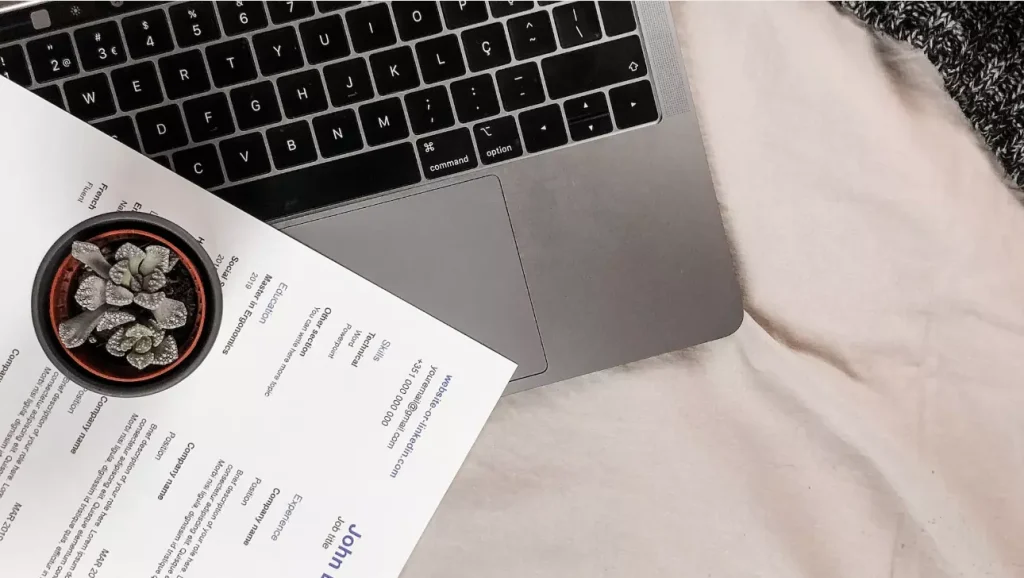Introduction:
In today’s competitive job market, job seekers are constantly looking for ways to stand out from the crowd. One aspect that often gets overlooked is the design of their resume. While many people focus on the content of their resume, the psychology behind resume design can have a significant impact on how it is perceived by employers. The choice of colors and layouts can influence the perception of a resume and even affect the hiring decision. In this blog, we will explore the psychology of resume design and how colors and layouts can influence perception.
FAQs about The Psychology of Resume Design: How Colors and Layouts Influence Perception:
1. How do colors affect the perception of a resume?
Colors can evoke various emotions and feelings. For example, bold and vibrant colors like red and orange can convey confidence and energy, while softer colors like blue and green can convey calmness and reliability. The choice of colors should align with the desired perception of the resume.
2. What is the best color scheme for a resume?
There is no one-size-fits-all answer to this question as it depends on the industry and personal preferences. However, a popular choice is to use a combination of neutral colors with one or two accent colors. This creates a visually appealing resume without overwhelming the reader.
3. How does the layout of a resume influence perception?
The layout of a resume determines the flow of information and can make it easier or harder for employers to navigate. A well-organized and balanced layout can create a positive impression, whereas a cluttered or confusing layout can give a negative perception.
4. Should I use a creative layout for my resume?
Using a creative layout can help you stand out from other applicants, especially in creative fields. However, it is important to strike a balance between creativity and professionalism. Make sure the layout is easy to read and does not distract from the content.
5. Can a poorly designed resume negatively impact my chances of getting hired?
Yes, a poorly designed resume can create a negative perception and potentially harm your chances of getting hired. Employers often make quick judgments based on the appearance of a resume before diving into the content. A visually unappealing or difficult-to-read resume may get disregarded.
6. Are there any specific layouts that are best for certain industries?
Certain industries may have specific expectations when it comes to resume design. For example, a more traditional layout may be preferred in conservative industries like finance or law, while a more creative layout may be embraced in industries like design or advertising.
7. How can I use font choices to enhance my resume?
Font choices can affect the readability and perception of a resume. It is generally recommended to use a clean and professional font, such as Arial or Times New Roman. Font size and formatting should be consistent throughout the resume to maintain a cohesive look.
8. Can the psychology of resume design be applied to online resumes or portfolios?
Absolutely. The principles of color and layout psychology can be applied to online resumes or portfolios as well. Using appropriate colors and layouts can enhance the overall aesthetics and user experience, making a positive impact on potential employers.
9. Is it necessary to hire a professional designer to create a visually appealing resume?
While hiring a professional designer can be beneficial, it is not necessary. Many templates and online tools are available that can help you create a visually appealing resume even without design experience. Just ensure that the design aligns with the industry and your desired perception.
10. Should I prioritize design over content in my resume?
Design and content go hand in hand. Both are equally important in creating an impactful resume. While a visually appealing design can catch the attention of employers, the content should be well-crafted and tailored to showcase your skills and experiences.
Conclusion:
The psychology of resume design plays a significant role in influencing the perception of a resume. Colors and layouts can evoke emotions, create a visual hierarchy, and enhance readability. By understanding the psychology behind resume design, job seekers can strategically use colors and layouts to convey the desired impression and stand out from the competition. Remember, a well-designed resume is a powerful tool that can make a lasting impact on potential employers.




